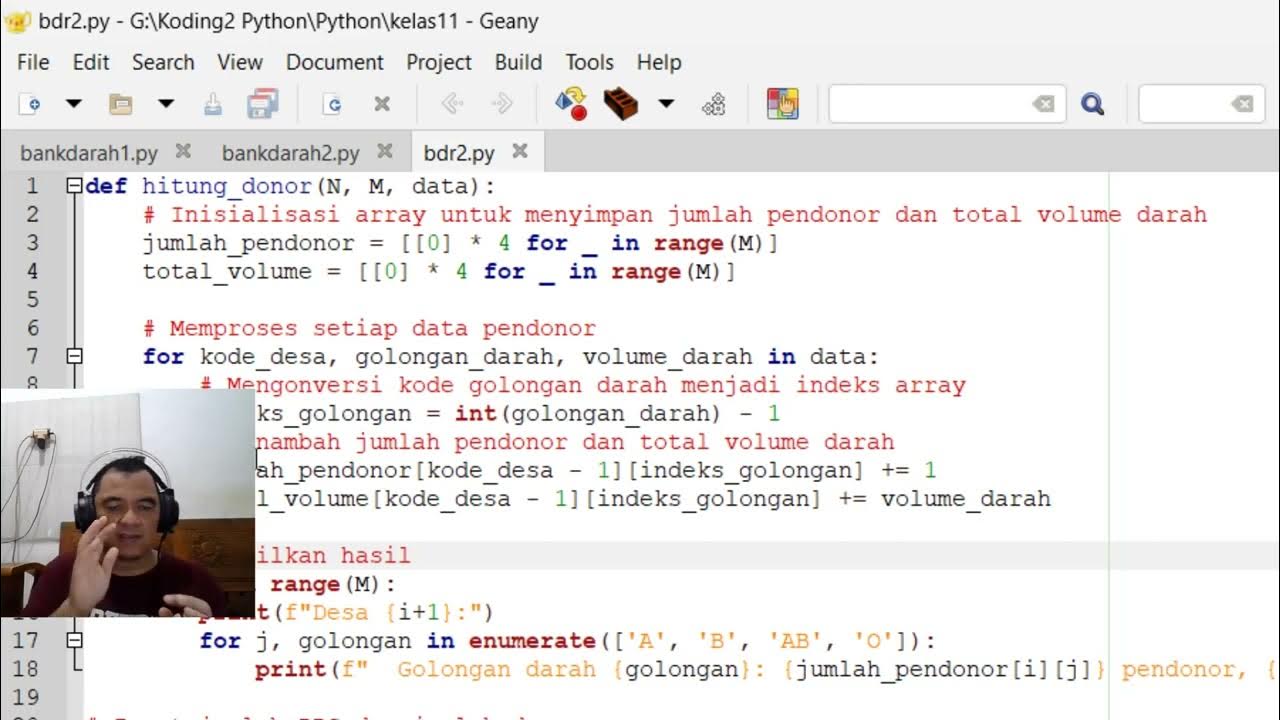Practice Problem: Solving a Circuit Using Ohm's Law and Kirchhoff's Current Law
Summary
TLDRThis video script from the 12th edition of Irvine's textbook, problem 2.12, guides through a circuit analysis involving resistors and current dividers. The objective is to determine the currents I1 and I2, and the power absorbed by a 40 kiloohm resistor in a parallel circuit with a current source. By applying Kirchhoff's current law and Ohm's law, the script demonstrates the calculation of voltage (VX), current values, and power, concluding with I1 at 12 milliamps, I2 as -4 milliamps, and the power at 5.76 watts. The explanation emphasizes understanding circuit behavior, current direction, and the relationship between resistor values and current magnitude.
Takeaways
- 📚 The problem is from the 12th edition of 'Irvine' and involves resistors and current dividers.
- 🔍 The circuit has a current source in the middle with two resistors on each side, arranged in parallel.
- 👉 The task is to find the currents I1 and I2, and the power absorbed by the 40 kiloohm resistor.
- 🔄 Kirchhoff's current law is applied to find the relationship between the currents at the node.
- Ohm's law, represented as I = V/R, is used to relate voltage, current, and resistance.
- 🔌 The voltage across both resistors (VX) is the same because they are in parallel.
- ⚙️ The currents I1 and IB are calculated using the derived equations from Ohm's law.
- 🔢 The calculated voltage VX across the resistors is found to be 480 volts.
- ⚡ The current I1 through the 40 kiloohm resistor is 12 milliamps, and IB through the 120 kiloohm resistor is 4 milliamps.
- 🔁 Since I2 is in the opposite direction to IB, I2 is -4 milliamps.
- 💡 The power absorbed by the 40 kiloohm resistor is calculated to be 5.76 watts using P = IV.
Q & A
What is the main topic of the video script?
-The main topic of the video script is the analysis of a circuit involving resistors and current dividers, specifically focusing on finding the currents I1 and I2 and the power absorbed by a 40 kiloohm resistor.
Which textbook edition is the problem from?
-The problem is from the 12th edition of 'Irvine'.
What are the two main quantities the video aims to find?
-The two main quantities the video aims to find are the currents I1 and I2 in the circuit.
What is the significance of redefining the current I2 as IB?
-Redefining the current I2 as IB helps to simplify the analysis by allowing the current to be considered in the same direction for both resistors, which is necessary because they are in parallel and thus have the same voltage across them.
What law is applied to find the relationship between the currents in the circuit?
-Kirchhoff's Current Law is applied to find the relationship between the currents in the circuit.
How is Ohm's law used in the script to find the currents I1 and IB?
-Ohm's law, which states V = IR, is rearranged to I = V/R to find the currents I1 and IB, using the voltage VX across each resistor.
What is the calculated voltage VX across each resistor?
-The calculated voltage VX across each resistor is 480 volts.
What is the calculated current I1 flowing through the 40 kiloohm resistor?
-The calculated current I1 flowing through the 40 kiloohm resistor is 12 milliamps.
What is the calculated current IB flowing through the 120 kiloohm resistor?
-The calculated current IB flowing through the 120 kiloohm resistor is 4 milliamps.
What is the power absorbed by the 40 kiloohm resistor?
-The power absorbed by the 40 kiloohm resistor is 5.76 watts.
What insight can be gained from the direction of the currents I1 and I2 in the circuit?
-The insight gained is that even though I2 was initially defined in the opposite direction, redefining it as IB going in the same direction as I1 helps understand that in a parallel circuit, the current through each resistor can be different, and the actual direction of I2 is opposite to the initial arrow notation.
Outlines

This section is available to paid users only. Please upgrade to access this part.
Upgrade NowMindmap

This section is available to paid users only. Please upgrade to access this part.
Upgrade NowKeywords

This section is available to paid users only. Please upgrade to access this part.
Upgrade NowHighlights

This section is available to paid users only. Please upgrade to access this part.
Upgrade NowTranscripts

This section is available to paid users only. Please upgrade to access this part.
Upgrade NowBrowse More Related Video

MATEMATIKA KELAS 8 HALAMAN 37 KURIKULUM MERDEKA 2022 || AYO MENCOBA

Penyelesaian Problem Bank Darah Kelas 11 [Bag. 2]

Examining Human Behavior and Social Environments with Charles Zastrow

22 Chapters = Oneshots‼️START Today To Complete BIOLOGY In 3.5 Months🌟 NEET 2025

Ler, escrever e resolver problemas | Kátia Smole e Maria Diniz (Org.) I Capítulos IV e V

Pensamento Computacional - Material de apoio - Desafio Jovem Engenheiro
5.0 / 5 (0 votes)